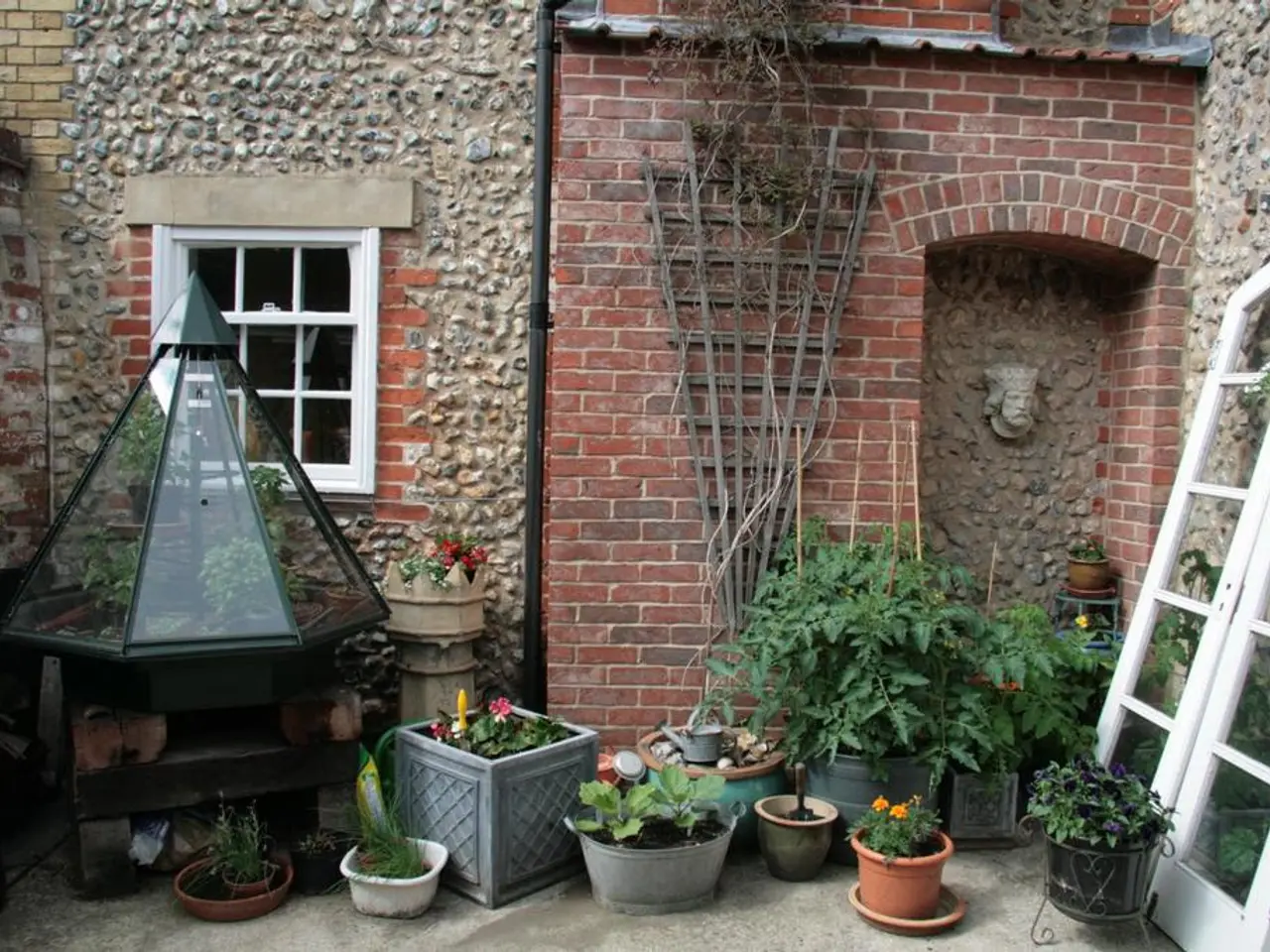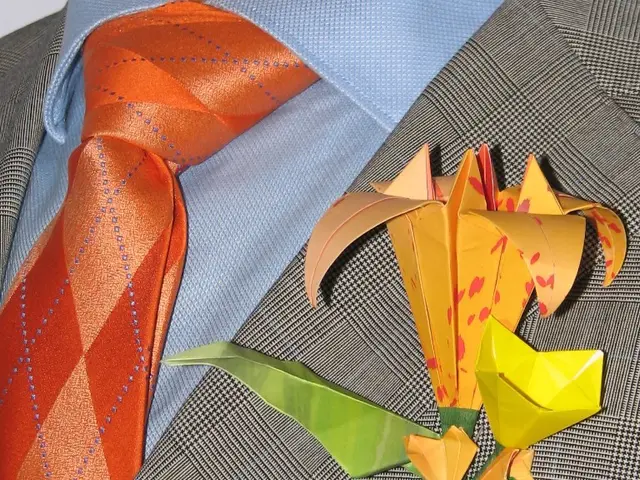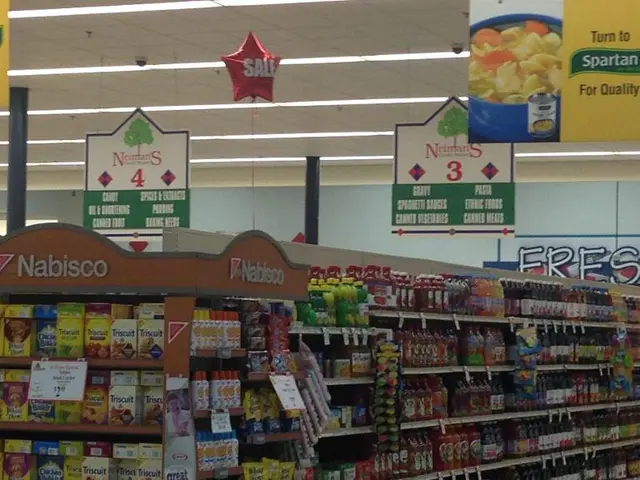Strategies to Cultivate Basil in Pots and Containers: Your Comprehensive Basil Growth Handbook
A must-have for every herb garden, basil is the delightful plant to grow this season. Fragrant and easy to nurture, this Mediterranean herb will liven up your garden and your dishes. From seeds to cuttings, growing basil can be a breeze, no matter your gardening skills.
When to Plant? Start Growing Basil After the Last Spring Frost
The perfect time to plant your basil is about two weeks following the last spring frost in your region. Aim for soil temperatures between 50-70 degrees Fahrenheit (10-21°C). Remember that heat is crucial; night-time temperatures should not slip below 50°F (10°C) for the basil to flourish.
How Long Does it Take to Grow Basil?
With nurturing care, basil can grow quickly, often ready for harvest in about 3-4 weeks. The sooner you plant by late spring, the earlier you'll reap the benefits. By the last week in April, your basil might be ready for harvest by the last week in May.
Growing from Cuttings or Seeds, Transplants, or Seedlings: Which Method Suits You Best?
Growing Basil from Cuttings
With a little patience, you can propagate basil cuttings and double your harvest.1. Choose a healthy stem with new growth.2. Snip off the stem 5-6 inches beneath a fresh growing tip.3. Strip off the bottom two inches of leaves.4. Place the cuttings in a clean glass of room temperature water for roots to develop.5. Place the cuttings in bright, indirect sunlight for around 10-14 days.6. Once the roots are about 1/2 inch long, you can transplant the cuttings into soil.
Growing Basil from Seeds
If you prefer starting from scratch, consider sowing basil seeds indoors.1. Purchase a pack of basil seeds from your local grocery store.2. Plant the seeds 1/4 inch deep in seed-starting formula or nutrient-rich potting soil.3. Maintain the soil at 70°F (21°C).4. Watch as the seedlings emerge within 7-14 days after planting.5. Once it's safe to plant outside after the last frost, transfer the seedlings to a raised bed or keep them in containers.
Growing Basil from Transplants / Seedlings
Growing basil from transplants or seedlings is the fastest and easiest method for a speedy harvest. Ideally, look for transplants with stems that have three sets of leaves.
Growing Basil in Containers
Basil thrives in warm, sunny conditions – perfect for container growing. A container keeps it out of reach from chilly temperatures and gives you control over the conditions. Ensure you have a pot with proper drainage to prevent root rot. If you struggle to find a suitable container, consider plants with a Gardenuity Grow Bag for optimized growth and special soil blends.
Basil Growing Conditions & Care
Soil and Fertilizing
Basil prefers a well-drained soil with a neutral pH and organic matter such as compost mixed in. Keep the soil consistently moist but not soggy to encourage growth.
Sunlight
Basil demands ample sunlight, ideally 6-8 hours a day. If you live in the South or Southwest, provide some afternoon shade to prevent leaf burn. For indoor basil, opt for an east-facing window with minimal direct sunlight.
Watering
Water basil frequently, allowing the top inch of soil to dry out between waterings. Water the base of the stems and avoid getting water on the leaves to minimize the risk of fungal diseases.
Pest Prevention
Keep an eye out for common pests like spider mites, whiteflies, and aphids. A strong jet of water may be enough to dislodge them. If an infestation occurs, check for affected areas and clip off the leaves to prevent spreading.
Tips for Best Basil Growth
- For compact growing in pots or containers, choose spicy globe basil.
- Place a fan near your indoor basil plants to improve air circulation and prevent fungus.
- Avoid over-fertilizing basil, as it can upset the delicate balance of nutrients in the soil.
- Basil naturally repels mosquitoes and acts as a companion plant for many vegetables.
- Regularly pinch off the top leaves from your basil plant about once a week to encourage bushy growth.
- Harvest leaves in the morning for the best flavor and juiciness.
Multiple varieties of basil exist, like sweet basil, purple basil, boxwood basil, Genovese basil, and lemon basil, each with a unique flavor, fragrance, and growing habit.
Basil Companion Plants
Basil works well with cabbage, tomatoes, asparagus, chamomile, chives, oregano, peppers, root vegetables, beans, and eggplant. Conversely, avoid planting basil near rue, fennel, or sage.
Basil Growing Stages
Basil goes through three main growth stages: getting settled, plant development, and time to harvest. Proper care during each stage will help you enjoy your basil from planting to harvest.
Getting Settled
Transplanted basil needs time to adapt to its new home. Be gentle as you adjust your new plants and provide them with a nutrient-rich soil and moderate watering.
Plant Development
Two weeks after transplanting, you should observe rapid new growth. Monitor your basil, ensuring it has sufficient moisture and light, as it's almost ready for harvest in 3-4 weeks.
Time to Harvest
Basil is ready for harvest when it reaches 6-8 inches. Regularly pinch off the top leaves, and consider using scissors to snip off larger stems as needed.
Don't wait for your basil to flower, as the leaves will become bitter, altering the flavor of your dishes.
Happy gardening, and good luck with your basil harvest!
As part of a holistic lifestyle, consider growing your own basil in a home-and-garden setting. From seeds to cuttings, you can easily start basil as part of your gardening endeavors, aligning with the wellness trend of home-grown produce. Not only will it enrich your lifestyle, but it will also bring a delightful scent and flavorful addition to your dishes.








